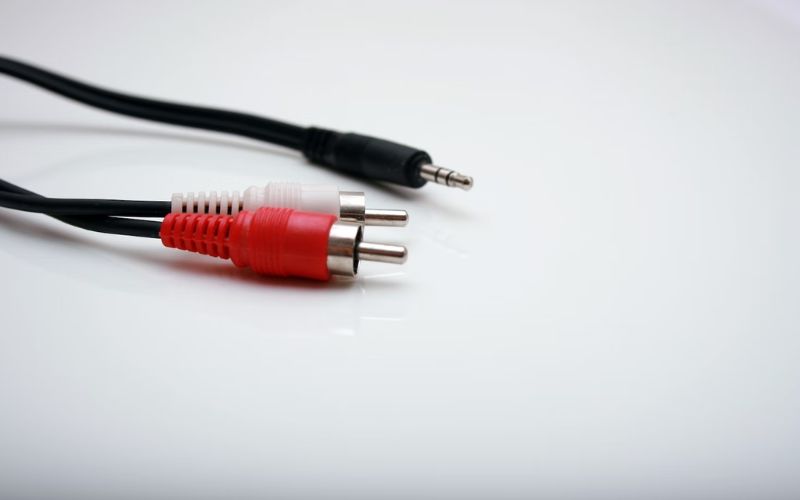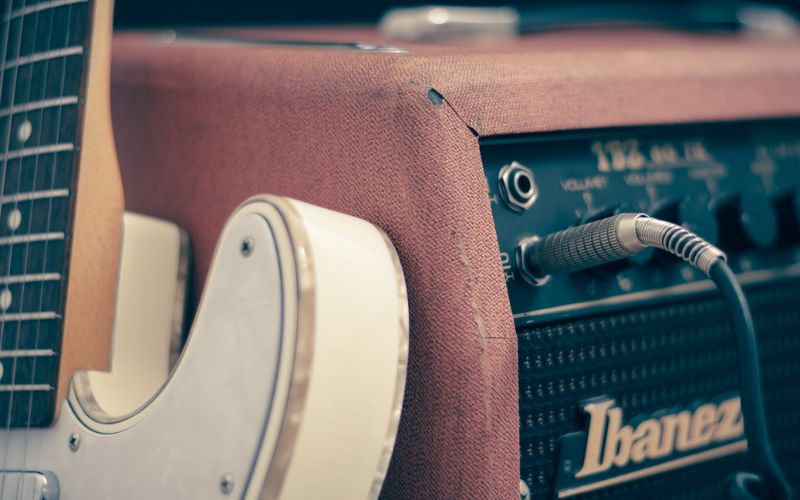What’s the difference between balanced and unbalanced cables? It’s question that won’t concern many. It is important for musicians or those in professional audio. Picking the right audio cable is key. We’ll break down exactly how unbalanced and balanced audio is different and what it means for audio cables.
Table of Contents
What Are Unbalanced Audio Cables?

Unbalanced audio cables carry an uneven or unbalanced audio signal. An unbalanced audio cable consists of two conductors; a signal wire and a ground wire. The signal wire delivers the audio signal between the input and output. The ground wire acts as a shield to protect the audio signal from unwanted interference. Unfortunately, they can also pick up excess noise. Because an unbalanced audio cable can be noisy when a signal passes through them, they are best suited to short distances. This can reduce the possibility that excess noise is picked up from unbalanced connections.
What Are Balanced Audio Cables?
Balanced audio cables have three conductors. Unlike an unbalanced cable, a balanced audio cable has two signal wires. Each signal wire sends an identical audio signal. Each audio signal in a balanced connection is sent with opposite or reversed polarity. These two signals are also sometimes called hot and cold signals. The result is the cancellation of noise that is picked up by the interconnecting audio cables. A balanced output allows the two audio signals to remain phased perfectly. A balanced cable also includes a ground wire just like unbalanced cables. With balanced connections, it’s two signals the ground wire protects from signal and electrical interference.
Why Use Balanced Audio Connections?
Whether you are using unbalanced or balanced cables, unwanted noise is often introduced in a communication chain. Other electronics and devices are a common source of unwanted noise and signal interference. Current flowing through any electronic device creates an electromagnetic field that can disrupt an audio signal and negatively impact sound quality in your audio system. Both balanced and unbalanced connections have ground wires that add protection. The two signal wires from a balanced connection add another level of protection from electrical interference. Added protection from electric devices and radio frequency interference set balanced cables apart. Balanced connections are less likely to pick up interference that wreaks havoc on audio quality.
Unbalanced vs Balanced Cables

So unbalanced audio connections are more likely to pick up excess noise. A balanced audio cable is better at fighting interference that can negatively impact audio quality. No reason to bother with an unbalanced audio cable. Not at all. The decision to purchase balanced or unbalanced cables isn’t that simple. There are valid use cases for balanced and unbalanced connections. In addition, either cable must be matched with the correct device. For example, a balanced cable can carry a balanced audio signal. But if either device it’s connected to isn’t compatible, a balanced connection can not be established. There are hardware requirements that must be met regardless of your preference. You should take this into account when buying and researching professional audio gear.
When Do I Need A Balanced Cable?
We’ve already covered how balanced connections are better for reducing unwanted noise and interference. This adds functional benefits that might not be immediately obvious. As audio cables increase in length, interference becomes a larger issue. Especially in a recording studio or performance venue with several video and audio devices. AV equipment, lighting, cell phones, and more can be sources of electromagnetic interference or EMI. Balanced signals are better at fighting interference, it’s less of an issue. Balanced cables can travel much further for this reason.
With two wires sending two signals, balanced cables can reach louder volumes. Balanced output can easily be 10 dB louder than the output of unbalanced signals. This combination of benefits makes balanced cables ideal for a few scenarios. Balanced cables are great for long runs where interference is a concern. Balance signals also make more sense for devices prone to interference. A concert microphone is a great example. Microphone cables are often long and we’ve all heard a mic pick-up feedback and distortion. External Line Return or XLR cables are one of the balanced cables commonly used with microphones. A balanced audio connection is often preferred in a recording studio too. Microphones, audio interfaces, mixers, and studio monitors are all common applications for balanced cables. The aforementioned benefits of balanced output are needed in every case though. There are some use cases when fighting interference isn’t as much of a concern. XLR cables and TRS cables are popular options for establishing balanced audio connections.
When Can I Use An Unbalanced Cable?

Unbalanced cables are also commonly used for professional audio applications. An unbalanced connection can work be a good fit for a few reasons. The first is obvious. When signal interference is not an issue. Another reason may come as a surprise. Audio cables that produce unbalanced signals are cheaper. Balanced audio cables can cost twice as much as comparable unbalanced options. For those looking to save money, an unbalanced cable is an obvious choice if it fits the equipment and use case. Instruments like guitars and keyboards are often used with an unbalanced cable. An unbalanced signal works well for instruments like these that use a mono connection almost exclusively. Cable connections to these instruments are also typically short.
When using unbalanced cables with short connections, a long cable runs that may introduce signal interference aren’t a concern. When longer unbalanced cables are used, the ground wire can actually pick up unwanted noise from surrounding devices. This can result in an audible buzzing or humming sound being reproduced alongside the normal audio. For this reason, some audio professionals avoid using unbalanced cables longer than 20 feet. For shorter cable lengths (under 10 feet), the signal from an unbalanced cable will actually be stronger than a balanced cable. RCA cables and TS cables are common connectors for an unbalanced connection.
Conclusion: Picking The Correct Audio Signal
As you can see, the balanced vs unbalanced cables debate isn’t as black and white as some think. Yes. Balanced cables provide more protection from interference. A balanced connection is definitely the best option for maintaining pure sound quality and reducing unwanted noise. But interference isn’t an issue for all applications. For certain applications, like guitars and some amps, unbalanced audio connections are a better fit. It’s important to know what the right tool for the job is. In this case, audio professionals must know the correct audio signal based on the hardware and use case.

Keith Collins has been writing for over 15 years for various publications. He’s a lover of music, home theater, and excellent sound quality. His fondness for technology in addition to his non-stop curiosity fuels his writing ventures.